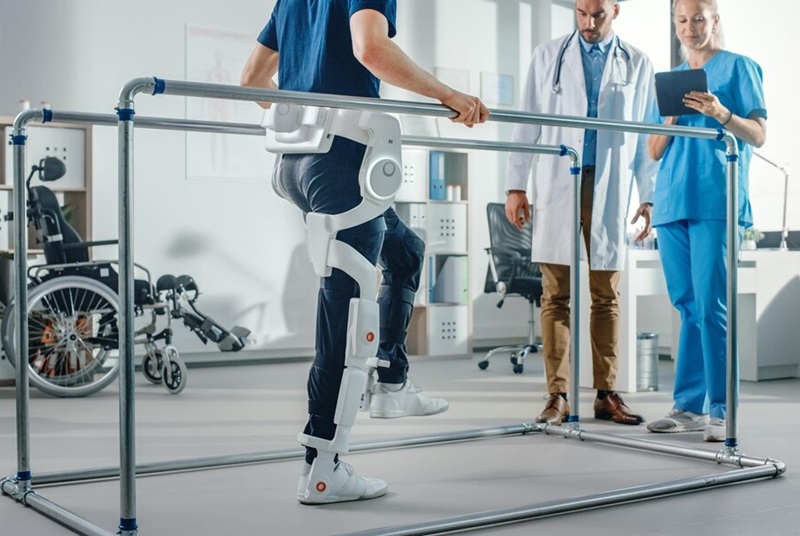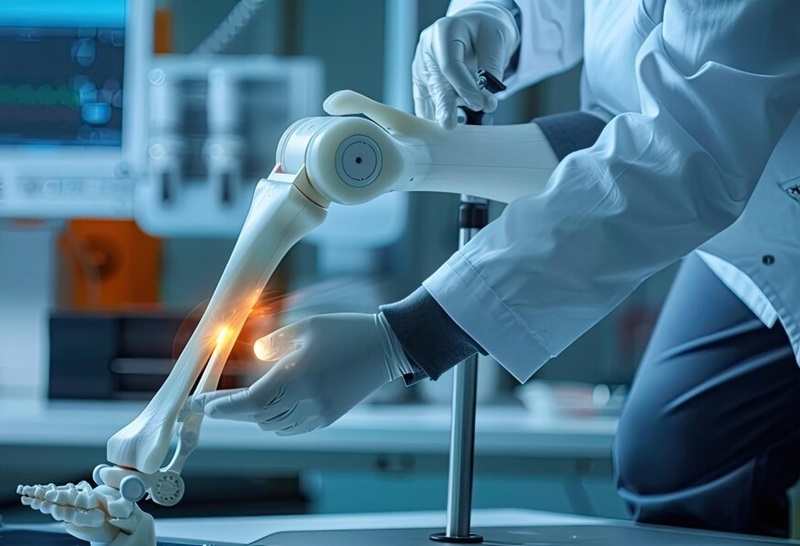Myth 1: Robots handle every aspect of surgery
One of the most pervasive misconceptions concerning robotic knee replacement is that the entire procedure is carried out by robots on their own. Actually, expert orthopedic surgeons employ robotic devices as tools to increase the procedure’s precision. Throughout the procedure, the surgeon is in charge and uses the robot’s guidance to make exact cuts and placements for the best results.
Myth 2: Robotic surgery is more dangerous than conventional procedures
Contrary to popular belief, robotic knee replacement surgery does not necessarily carry a higher risk than conventional procedures. In reality, the cutting-edge technology has many advantages, such as improved accuracy, lessened tissue stress, and lower blood loss. These elements help patients experience shorter hospital stays, quicker recoveries, and ultimately lower risks.
Myth 3: Patients who undergo robotic surgery lose the personal touch
It is baseless to worry that a robotic knee replacement will eliminate individualized care and face-to-face connection. Robotic technology enhances the surgeon’s skill and enables a more specialized approach. Taking into account each patient’s particular anatomy and demands, surgeons work with patients to establish tailored treatment programs.
Myth 4: Robotic surgery does not require a skilled surgeon
Modern technology and skilled surgeons work together to perform robotic knee replacement surgery. A professional orthopedic surgeon’s experience is still essential, even though robotic equipment can help with precise measurements and corrections. Surgeons use their education and experience to assess data, make wise judgments, and guarantee the success of the treatment.
Myth 5: Only wealthy patients can afford robotic surgery
An expanding patient population now has access to robotic knee replacement. Although it was first developed in specialist facilities, the technique has spread widely, and many orthopedic facilities now provide this cutting-edge procedure. Its advantages are intended to improve outcomes for a wide range of patients rather than being restricted to a particular demographic.
Myth 6: Robotic surgery is quite costly
Although robotic knee replacement may initially seem more expensive than conventional procedures, it’s crucial to weigh the long-term advantages. In terms of rehabilitation, follow-up visits, and potential issues linked to prolonged hospital stays, quicker recovery times, decreased postoperative discomfort, and fewer complications can result in overall cost savings.
Myth 7: Only complex cases can benefit from robotic surgery
Not only in difficult circumstances can a knee replacement be done robotically. Patients with severe joint injury to those looking for early intervention can all benefit from it. Precision and personalization of the technology make it an effective tool for enhancing outcomes for a variety of knee-related problems.
In Short: Clarifying the Real Story Behind the Technology
Like any novel medical development, there are times when false information can obscure the truth. Robotic surgery for knee replacement is not a replacement for experienced doctors, nor is it just for the wealthy. It is a technology that supplements human skill and gives surgeons the power to improve accuracy and patient outcomes. By dispelling these widespread misconceptions, we seek to open the door to a more accurate comprehension of the advantages and realities of this revolutionary method of orthopedic therapy.
FAQs
Can a robot replace a trained surgeon’s abilities?
No, a robot cannot take the position of an expert surgeon’s knowledge, discernment, and decision-making skills. Robotic surgery aids surgeons by offering accurate measurements and direction, but the success of the procedure still depends on the surgeon’s skill.
Is robotic knee replacement only accessible to a particular patient population?
No, availability to robotic knee replacement is increasing. It helps a wide spectrum of patients, not just one particular one. The technology is accessible to a larger patient population and aims to enhance outcomes.
Are only difficult cases acceptable for robotic knee replacement?
No, robotic knee replacement is appropriate for a range of situations, from minor to serious knee problems. The technology is useful for improving results across a range of patient demands because of its precision and customisation.
Will I still be able to make decisions about my care after robotic surgery?
Without a doubt, patient involvement is still essential. Patients and surgeons work together to understand each other’s requirements, concerns, and preferences. Robotic surgery prioritizes the preferences of the patient while providing data to assist decision-making.
Does robotic knee replacement result in less discomfort after surgery?
Yes, less postoperative pain is one of the benefits of robotic knee replacement. Smaller incisions and less tissue damage are made possible by the technology’s precision, which results in a more comfortable recovery.










